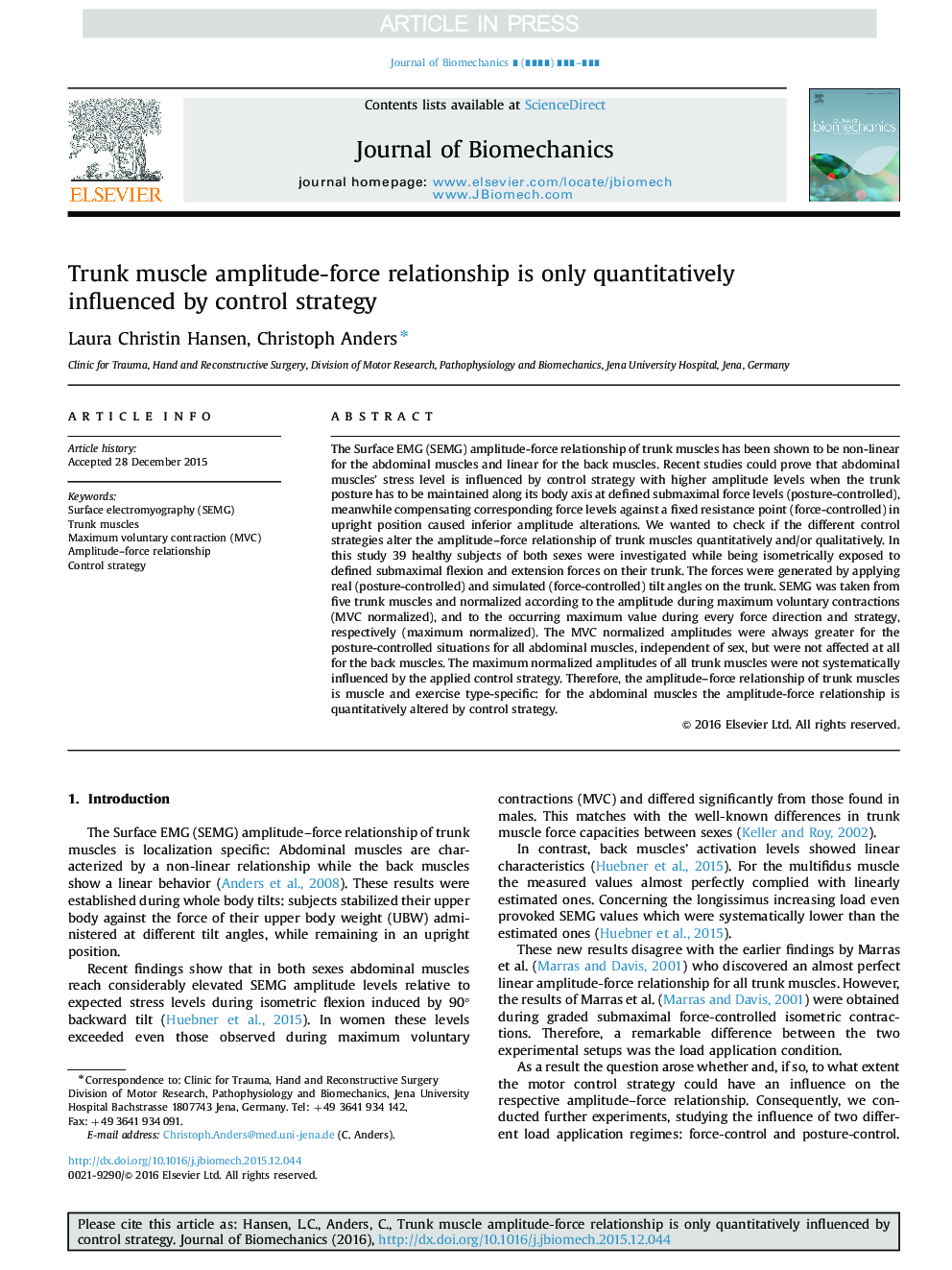| Article ID | Journal | Published Year | Pages | File Type |
|---|---|---|---|---|
| 10431140 | Journal of Biomechanics | 2016 | 8 Pages |
Abstract
The Surface EMG (SEMG) amplitude-force relationship of trunk muscles has been shown to be non-linear for the abdominal muscles and linear for the back muscles. Recent studies could prove that abdominal muscles׳ stress level is influenced by control strategy with higher amplitude levels when the trunk posture has to be maintained along its body axis at defined submaximal force levels (posture-controlled), meanwhile compensating corresponding force levels against a fixed resistance point (force-controlled) in upright position caused inferior amplitude alterations. We wanted to check if the different control strategies alter the amplitude-force relationship of trunk muscles quantitatively and/or qualitatively. In this study 39 healthy subjects of both sexes were investigated while being isometrically exposed to defined submaximal flexion and extension forces on their trunk. The forces were generated by applying real (posture-controlled) and simulated (force-controlled) tilt angles on the trunk. SEMG was taken from five trunk muscles and normalized according to the amplitude during maximum voluntary contractions (MVC normalized), and to the occurring maximum value during every force direction and strategy, respectively (maximum normalized). The MVC normalized amplitudes were always greater for the posture-controlled situations for all abdominal muscles, independent of sex, but were not affected at all for the back muscles. The maximum normalized amplitudes of all trunk muscles were not systematically influenced by the applied control strategy. Therefore, the amplitude-force relationship of trunk muscles is muscle and exercise type-specific: for the abdominal muscles the amplitude-force relationship is quantitatively altered by control strategy.
Related Topics
Physical Sciences and Engineering
Engineering
Biomedical Engineering
Authors
Laura Christin Hansen, Christoph Anders,
